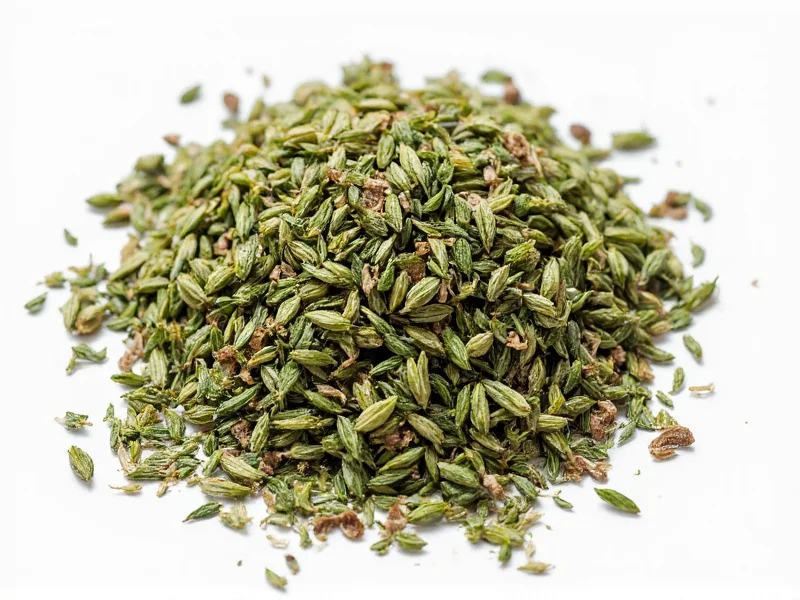When exploring how to use dried tarragon effectively, understanding its concentrated nature compared to fresh is essential for achieving balanced flavors in your cooking. This versatile herb maintains most of the distinctive anise-like notes that make tarragon prized in French cuisine, though with some subtle differences in flavor profile and intensity. Unlike many dried herbs that merely serve as acceptable substitutes, dried tarragon offers unique advantages in certain applications where fresh isn't practical or available.
Understanding Dried Tarragon's Flavor Profile
Tarragon, both fresh and dried, belongs to the Artemisia genus and delivers that signature licorice-like flavor, though the drying process concentrates certain compounds while diminishing others. Fresh tarragon contains higher levels of estragole (the compound responsible for the anise flavor), while dried tarragon develops more earthy, slightly bitter notes as it ages. French tarragon (Artemisia dracunculus), the variety used in quality dried products, maintains superior flavor compared to Russian tarragon which lacks the distinctive taste.
Professional chefs note that dried tarragon works particularly well in slow-cooked dishes where its flavor can gradually infuse throughout the cooking process. The concentrated nature means it withstands long simmering times better than fresh tarragon, which can lose its delicate flavor when exposed to prolonged heat.
Dried to Fresh Tarragon Conversion Guide
Getting the substitution ratio right is critical when working with dried tarragon. Because the drying process removes moisture and concentrates the herb's essential oils, you need significantly less dried tarragon than fresh to achieve equivalent flavor.
| Recipe Requirement | Dried Tarragon Amount | When to Add During Cooking |
|---|---|---|
| 1 tablespoon fresh tarragon | 1 teaspoon dried tarragon | Early in cooking for infused dishes |
| 2 tablespoons fresh tarragon | 2 teaspoons dried tarragon | Middle of cooking for balanced flavor |
| 3 tablespoons fresh tarragon | 1 tablespoon dried tarragon | Early for strong flavor presence |
| Finishing garnish (fresh) | ¼-½ teaspoon dried | Final minutes for subtle flavor |
This dried tarragon measurement guide ensures proper flavor balance in your dishes. Remember that older dried tarragon loses potency, so you may need to increase the amount slightly for herbs that have been stored longer than 6 months. Always crush dried tarragon between your fingers before adding to release maximum flavor.
Best Culinary Applications for Dried Tarragon
Certain dishes particularly benefit from dried tarragon's concentrated flavor. While fresh tarragon shines in delicate applications like béarnaise sauce or salads, dried tarragon excels in:
- Slow-cooked chicken dishes - The herb withstands long braising times in recipes like coq au vin or chicken fricassee
- Vegetable stocks and broths - Releases flavor gradually during extended simmering
- Dry rubs for meats - Combines well with other dried herbs in seasoning blends
- Vinaigrettes and marinades - Infuses oil-based dressings effectively
- Herb-infused salts and butters - Maintains flavor integrity better than fresh
For French classics like fines herbes, dried tarragon can substitute for fresh when properly measured, though the flavor profile will be slightly more robust and less floral. When using dried tarragon in egg dishes like quiches or omelets, add it early in the cooking process to allow flavors to meld.
Proper Storage for Maximum Shelf Life
To maintain dried tarragon's flavor for the longest possible time, proper storage is essential. Exposure to light, heat, and moisture rapidly degrades the herb's essential oils. The best dried tarragon storage practices include:
- Store in an airtight container away from direct light
- Keep in a cool, dark cupboard (not above the stove)
- Use within 6-12 months for optimal flavor (though safe indefinitely)
- Freeze for extended storage (up to 2 years with minimal flavor loss)
- Never store near heat sources or in clear containers
Check your dried tarragon's potency by rubbing a small amount between your fingers and smelling. If the aroma is faint or musty, it's time to replace it. Properly stored dried tarragon should retain vibrant green color and strong fragrance.
Common Mistakes to Avoid with Dried Tarragon
Many home cooks make these dried tarragon usage errors that compromise dish quality:
- Overusing the herb - Dried tarragon's concentrated flavor can easily dominate a dish
- Adding too late in cooking - Needs time to rehydrate and release flavors
- Using old, stale tarragon - Results in weak flavor that requires overcompensation
- Confusing French and Russian varieties - Russian tarragon lacks authentic flavor
- Storing near strong-smelling spices - Tarragon readily absorbs surrounding odors
When substituting dried tarragon in recipes calling for fresh, remember that the flavor develops more slowly. Add it earlier in the cooking process than you would fresh tarragon to allow proper infusion. For delicate dishes, consider using half the recommended amount initially, then adjusting to taste.
Recipe Applications Showcasing Dried Tarragon
Dried tarragon shines in these specific applications where its concentrated flavor provides distinct advantages:
Classic Chicken Fricassee: Add 1½ teaspoons dried tarragon to the braising liquid at the beginning of cooking. The slow simmer allows the herb to fully infuse the sauce, creating complex flavor without the grassy notes that fresh tarragon might develop during prolonged cooking.
Herb-Infused Olive Oil: Combine ¼ cup dried tarragon with 2 cups extra-virgin olive oil in a sterilized jar. Let steep in a cool, dark place for 2-3 weeks, then strain. This creates a versatile finishing oil for vegetables, fish, or bread dipping with remarkably stable flavor.
Dry Rub for Roasted Vegetables: Mix 1 teaspoon dried tarragon with 2 teaspoons each of dried thyme and rosemary, plus salt and pepper. Toss with root vegetables before roasting. The dried herbs adhere better to the vegetables and withstand high oven temperatures better than fresh.











 浙公网安备
33010002000092号
浙公网安备
33010002000092号 浙B2-20120091-4
浙B2-20120091-4